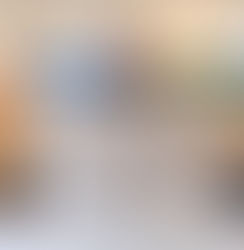Artists Tackle Social Justice, Politics, and Environmentalism in Baltimore’s Newest Festival
- Cara Ober
- Mar 31, 2016
- 2 min read

Light City Baltimore promises to be a spectacle of innovation, creativity, and ideas. Downtown businesses are hopeful that the 5 million dollar festival will attract thousands of consumers to the area, especially after a loss of income after the Uprising last spring.
You might assume that Light City will embrace technological innovation but keep content *lite* in order to appeal to the masses without upsetting anyone. You might think that the artists picked and funded to participate in the festival would be encouraged to avoid the serious social, economic, and environmental issues that fuel much of contemporary art, especially in Baltimore. However, BOPA’s national committee of jurors who selected the festival’s visual artists have strong ideas about the function and purpose of art. As a result, many of the dazzling, colorful installations you will experience in Light City will also educate visitors about social justice, economic inequality, global warming, and Baltimore’s troubled past.
In preparation for the festival, BmoreArt is highlighting a group of Light City visual artists who will tackle social, economic, and environmental issues and provide a challenging critical discourse for visitors and patrons.

Diamonds Light Baltimore by Mina Cheon and Gabriel Kroiz
Twinkling in clusters along Pratt Street all the way down to the water, Cheon and Kroiz’s fifteen diamond shaped sculptures will invite you to come up close and even step inside. With the largest LED piece at 16 feet tall, the installation offers a familiar and deeply symbolic image that represents love, wealth, greed, and capitalism. However, when it’s color shifts from white to blue at 10 pm, the diamonds become specifically about Baltimore.
Artist couple Mina Cheon and Gabriel Kroiz have installed their architectural sculptures in other places to address a number of ideas, but it’s shift into blue is a statement about Baltimore’s ‘blue light’ policing strategy, unequal conditions between blue light neighborhoods and those without, and an awareness of the state of race in Baltimore after the Uprising in 2015.
According to Cheon, they wanted the project to “help in some of the healing aspects needed post the passing of Freddie Gray and the civil unrest. It will be nearly a year since that time… and while last year we had a city-wide curfew and enduring dark times, we are thrilled to be a part of a community of artists and culturalists who can help light up our city.”
These larger-than-life LED sculptures will signify two Baltimores, one prosperous and hopeful and the other in a state of permanent emergency. The light will change from white to blue at 10pm recalling last April’s citywide curfew and respond to what the couple describes as “the most current and largest city light installation in Baltimore” — blue light police surveillance.





![[REVIEW] BLUE COLLAR BALTIMORE: NEW AMERICAN REALISM, paintings by Tony Shore](https://static.wixstatic.com/media/d2437b_affb3fd6cdcd4c91bf66031c98be427b~mv2_d_6325_4347_s_4_2.jpg/v1/fill/w_365,h_250,fp_0.50_0.50,q_30,blur_30,enc_avif,quality_auto/d2437b_affb3fd6cdcd4c91bf66031c98be427b~mv2_d_6325_4347_s_4_2.webp)
![[REVIEW] BLUE COLLAR BALTIMORE: NEW AMERICAN REALISM, paintings by Tony Shore](https://static.wixstatic.com/media/d2437b_affb3fd6cdcd4c91bf66031c98be427b~mv2_d_6325_4347_s_4_2.jpg/v1/fill/w_38,h_26,fp_0.50_0.50,q_90,enc_avif,quality_auto/d2437b_affb3fd6cdcd4c91bf66031c98be427b~mv2_d_6325_4347_s_4_2.webp)












Comments